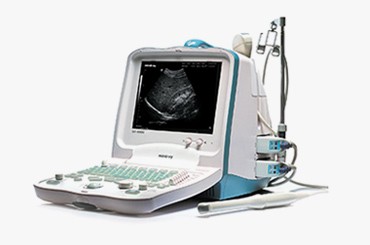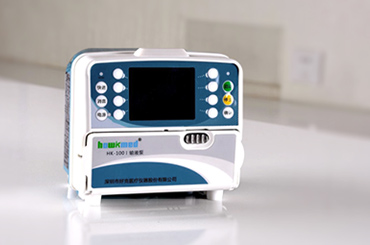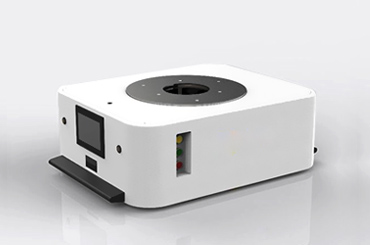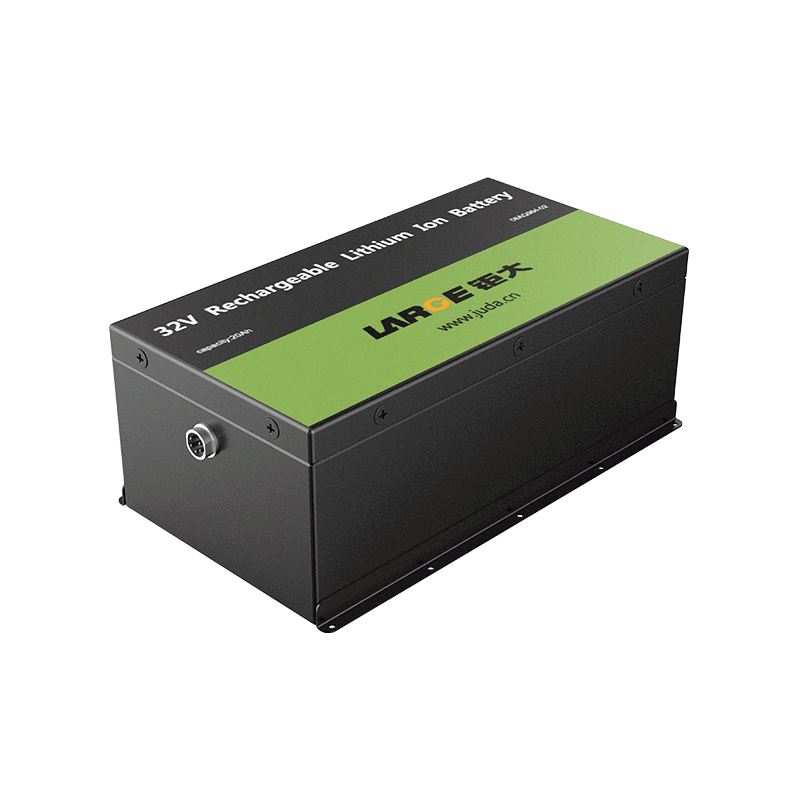-
Introduction of Battery Calibration System
-
Definition and Purpose
-
Battery Calibration Methodology+
- Voltage-Based Calibration
- Current-Based Calibration
- Temperature-Based Calibration
- Coulomb Counting
- Internal Resistance Measurement
- Software-Based Calibration
-
Why We need Battery Calibration System EV Case Study+
- Optimizing Range and Performance
- Enhancing Battery Lifespan
- Improving Charging Efficiency
- Enhancing Regenerative Braking
- Ensuring Safety and Reliability
- Improved device performance:
-
Multifunctional Implementation of Battery Calibration Systems+
- Integrated SoC and SoH Estimation
- Real-Time Monitoring and Adaptive Calibration
- Predictive Maintenance and Health Management
- Multi-Platform Compatibility
- Enhanced User Interface and Data Visualization
- Cybersecurity and Data Integrity
- Scalability and Modularity
-
Real World Case+
- How to Calibrate Your Own Device Battery
- Battery Maintenance and Replacement
-
Large Power Custom Battery Pack Supplier
-
Frequently Asked Questions
What the battery calibration systems?
APR 18, 2025 Pageview:493
Introduction of Battery Calibration System
Battery calibration systems are technologies or processes used to calibrate or optimize the performance and accuracy of batteries, particularly rechargeable batteries like those found in smartphones, laptops, electric vehicles, and other portable electronic devices. This includes laptop batteries, which can be manufacturer-specific or generic alternatives. The primary purpose of battery calibration systems is to ensure that the battery's state of charge (SoC) and state of health (SoH) readings are accurate, maximizing the battery's lifespan and performance. Here are some common types of battery calibration systems:
Definition and Purpose
Battery calibration is the process of resetting a battery's internal circuitry to provide accurate readings of its charge level. This process is essential for maintaining the accuracy and lifespan of lithium-ion batteries, which are commonly used in portable devices such as smartphones, laptops, and electric vehicles. The purpose of battery calibration is to ensure that the battery's state of charge (SoC) is accurately reflected, allowing users to manage their power use effectively and prolong the battery's lifespan. Accurate SoC readings help prevent unexpected shutdowns and optimize the overall performance of the device, ensuring that the battery operates efficiently and reliably.
Battery Calibration Methodology
Voltage-Based Calibration
This method involves measuring the voltage of the battery cells and adjusting the battery management system (BMS) accordingly to calibrate the SoC estimation. By accurately measuring the voltage, the BMS can more precisely determine the battery's charge level.
Current-Based Calibration
Current-based calibration systems monitor the current flowing in and out of the battery during charging and discharging cycles. By analyzing the current flow, these systems can calibrate the BMS to accurately estimate the battery's remaining capacity and health.
Temperature-Based Calibration
Temperature plays a crucial role in battery performance and longevity. Temperature-based calibration systems monitor the temperature of the battery cells and adjust the BMS to compensate for temperature variations. This ensures that the SoC and SoH estimations remain accurate under different operating conditions.
Coulomb Counting
Coulomb counting is a method of estimating the battery's state of charge by integrating the current flowing in and out of the battery over time. Calibration systems that utilize coulomb counting measure and calibrate the battery's capacity and efficiency based on the accumulated charge and discharge cycles.
Internal Resistance Measurement
Internal resistance measurement systems analyze the internal resistance of the battery cells, which can affect the battery's performance and capacity. By measuring and calibrating the internal resistance, these systems can improve the accuracy of the battery's SoH estimation and optimize its performance.
Software-Based Calibration
Some battery calibration systems rely on software algorithms to analyze data from various sensors, such as voltage, current, temperature, and internal resistance sensors. These algorithms use sophisticated mathematical models to calibrate the battery's SoC and SoH estimations based on real-time data inputs.

Why We need Battery Calibration System EV Case Study
Battery calibration systems are essential for maintaining the accuracy and reliability of rechargeable batteries, ensuring optimal performance, longevity, and safety. Regular calibration and monitoring help prevent overcharging, over-discharging, and other factors that can degrade battery health over time.
Battery calibration systems play a crucial role in electric vehicles (EVs) due to the central importance of the battery pack in their operation. Here's how battery calibration systems relate to electric vehicles:
Optimizing Range and Performance
In electric vehicles, accurate estimation of the battery's state of charge (SoC) is critical for determining the available driving range and optimizing vehicle performance. Battery calibration systems ensure that the SoC readings provided to the vehicle's onboard computer are accurate, allowing drivers to make informed decisions about their driving range and energy consumption.
Calibration ensures that the battery's charge level is accurately reflected, allowing users to manage their power use effectively. This helps in avoiding unexpected low battery warnings and ensures that the battery percentage displayed is reliable.
Enhancing Battery Lifespan
Maintaining the health and longevity of the battery pack is essential for the long-term performance and resale value of electric vehicles. Battery calibration systems help optimize charging and discharging profiles, reducing stress on the battery cells and minimizing factors that can accelerate degradation. By calibrating the battery management system (BMS) accurately, these systems ensure that the battery operates within safe limits, prolonging its lifespan.
Prolonged battery life: Calibration helps to maintain the battery's internal circuitry, which can prolong its lifespan. By ensuring that the battery is charged and discharged correctly, calibration minimizes wear and tear, extending the overall battery life.
Improving Charging Efficiency
Efficient charging is crucial for maximizing the convenience and usability of electric vehicles. Battery calibration systems help improve charging efficiency by accurately estimating the battery's state of charge and adjusting charging parameters accordingly. This ensures that the battery is charged optimally without overcharging or undercharging, reducing charging times and energy wastage.
Enhancing Regenerative Braking
Many electric vehicles utilize regenerative braking systems to capture and store energy during deceleration. Battery calibration systems play a role in optimizing regenerative braking performance by accurately estimating the battery's state of charge and adjusting regenerative braking levels accordingly. This ensures efficient energy capture without overloading the battery or compromising vehicle safety.
Ensuring Safety and Reliability
Electric vehicles must meet stringent safety and reliability standards to ensure the well-being of drivers, passengers, and other road users. Battery calibration systems help maintain the safety and reliability of electric vehicles by monitoring key parameters such as voltage, temperature, and internal resistance, and calibrating the BMS to prevent overcharging, overheating, or other hazardous conditions.
Reduced risk of battery damage: Calibration can help to prevent battery damage caused by inaccurate charge readings or improper charging habits. By maintaining accurate SoC readings, calibration reduces the risk of overcharging or deep discharging, which can harm the battery health.
Improved device performance:
Calibration can improve the overall performance of a device by ensuring that the battery is functioning optimally. A well-calibrated battery provides consistent power, enhancing the performance of smartphones, laptops, and other portable devices.

Multifunctional Implementation of Battery Calibration Systems
Implementing multifunctional battery calibration systems involves integrating various functionalities and capabilities into a unified platform to address diverse requirements and applications. Here's how multifunctional implementation can enhance battery calibration systems:
Integrated SoC and SoH Estimation
Multifunctional battery calibration systems combine state-of-charge (SoC) and state-of-health (SoH) estimation capabilities into a single platform. By integrating algorithms for accurate SoC estimation based on voltage, current, and temperature measurements with techniques for assessing SoH indicators such as internal resistance, capacity degradation, and cycle life, these systems provide comprehensive insights into battery performance and health.
Real-Time Monitoring and Adaptive Calibration
Multifunctional battery calibration systems offer real-time monitoring of battery parameters and adaptive calibration capabilities. By continuously collecting and analyzing data on voltage, current, temperature, and other relevant metrics, these systems dynamically adjust calibration parameters to optimize accuracy and performance in changing operating conditions, ensuring precise SoC and SoH estimations over the battery's lifecycle.
Predictive Maintenance and Health Management
Multifunctional battery calibration systems incorporate predictive maintenance and health management features to proactively identify and address potential issues before they affect performance. By leveraging machine learning algorithms and historical data analysis, these systems predict battery degradation trends, anticipate failure modes, and recommend preventive actions such as recalibration, capacity balancing, or replacement to maximize battery lifespan and reliability.
Multi-Platform Compatibility
Multifunctional battery calibration systems are designed to be compatible with a wide range of battery chemistries, configurations, and applications. Whether used in electric vehicles, consumer electronics, renewable energy storage, or industrial settings, these systems support diverse battery types such as lithium-ion, lead-acid, nickel-metal hydride, and more, ensuring versatility and interoperability across different use cases.
Enhanced User Interface and Data Visualization
Multifunctional battery calibration systems feature intuitive user interfaces and advanced data visualization tools for enhanced usability and insights. Interactive dashboards, graphical representations of battery performance metrics, and customizable reporting capabilities empower users to monitor battery health, performance trends, and calibration status effectively, facilitating informed decision-making and actionable insights.
Cybersecurity and Data Integrity
Multifunctional battery calibration systems prioritize cybersecurity and data integrity to protect sensitive information and prevent unauthorized access or manipulation. Robust encryption mechanisms, access controls, and secure communication protocols safeguard data confidentiality and integrity, ensuring trustworthiness and compliance with regulatory requirements.
Scalability and Modularity
Multifunctional battery calibration systems are designed with scalability and modularity in mind to accommodate evolving needs and future upgrades. Modular architecture, standardized communication protocols, and open-source software frameworks enable seamless integration with existing infrastructure and facilitate scalability to support larger battery fleets or more complex applications, providing flexibility and investment protection.
Overall, multifunctional implementation of battery calibration systems offers comprehensive capabilities for accurate, reliable, and adaptive calibration of batteries across diverse industries and applications, empowering users to maximize performance, lifespan, and efficiency while minimizing downtime and operational risks.
Real World Case
How to Calibrate Your Own Device Battery
Calibrating a battery involves charging it to 100% capacity and then fully discharging it until it reaches 0%. Here are the steps to follow:
Charge the battery to 100%: Plug in your device and charge the battery to 100% capacity. Ensure that the device remains connected to the power adapter until the battery icon indicates a full charge.
Unplug the device: Once the battery is fully charged, unplug the device from the power adapter. This step is crucial to begin the discharge process.
Use the device until the battery is fully discharged: Use the device normally until the battery is fully discharged and the device shuts down. This helps in resetting the battery gauge and ensuring that the battery percentage is accurate.
Charge the battery again: Plug in the device and charge the battery again to 100% capacity. This final step completes the calibration process, ensuring that the battery sufficiently reflects its true charge level.
Battery Maintenance and Replacement
To maintain a battery's health and performance, it's essential to follow proper maintenance habits. Here are some tips:
Avoid extreme temperatures: Avoid exposing your device to extreme temperatures, as this can affect battery performance. Both high and low temperatures can degrade battery health and reduce its lifespan.
Keep the battery away from moisture: Keep the battery away from moisture, as this can cause damage to the internal circuitry. Moisture can lead to short circuits and other issues that compromise battery performance.
Avoid deep discharges: Avoid deep discharges, as this can reduce the battery's lifespan. Try to keep the battery charge above 20% to prevent unnecessary strain on the battery cells.
Replace the battery when necessary: Replace the battery when it no longer holds a charge or is no longer functioning properly. If you notice a significant drop in battery performance or frequent low battery warnings, it may be time for a replacement.
Large Power Custom Battery Pack Supplier
Looking for reliable and efficient custom battery solutions? Look no further! At Large Power, we specialize in designing and building advanced Battery Management Systems (BMS) tailored to your specific needs. Whether you need custom battery packs for electric vehicles, consumer electronics, or industrial applications, our expert team is here to deliver high-performance solutions that maximize battery life and efficiency. Contact us today to discover how our innovative battery solutions can power your success!
Frequently Asked Questions
Q: How often should I calibrate my battery?
A: It's recommended to calibrate your battery every 3-6 months, or when you notice a significant decrease in battery performance. Regular calibration helps maintain accurate charge readings and optimal battery health.
Q: Can I over-calibrate my battery?
A: Yes, over-calibrating your battery can add unnecessary charge cycles, which can reduce its lifespan. It's important to calibrate only when necessary to avoid excessive wear on the battery.
Q: Will calibration fix a battery that drains quickly?
A: Calibration can help to ensure accurate charge readings, but it may not fix underlying issues that cause rapid drainage. If your battery drains quickly, it could be due to other factors such as background apps, hardware issues, or battery age.
Q: Can I calibrate my battery if it's not a lithium-ion battery?
A: No, calibration is only necessary for lithium-ion batteries. Other types of batteries, such as nickel-metal hydride or lead-acid, may not require calibration and have different maintenance needs.
- Prev Article: What is the difference between BMS and EMS ?
- Next Article: The Advantages of Constant Current Charging
Leave Message
Hottest Categories
-
Hottest Industry News
-
Latest Industry News












